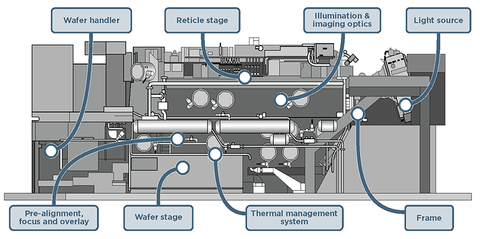Vision for Success: Facilities for Semiconductor Materials and Manufacturing Equipment
This summary provides an overview of the CHIPS Program Office’s “Vision for Success” for the CHIPS funding opportunities for the construction, expansion, or modernization of semiconductor materials and manufacturing equipment facilities. Get the full text here.
EXECUTIVE SUMMARY
The semiconductor supply chain is global, specialized, and interconnected. Chipmakers do business with thousands of individual suppliers that provide the highly complex materials and tools used to produce semiconductors. Often, even the biggest chipmakers lack full visibility into their entire supply chain.
The United States and its allies and partners produce nearly all of the world’s most advanced semiconductor materials and manufacturing equipment. But as suppliers have expanded overseas, the United States has also grown vulnerable to risks stemming from the geographic concentration of critical suppliers, as well as from threats to supply chain security and integrity. At the same time, the CHIPS Incentives Program presents a unique opportunity to strengthen the U.S. supplier ecosystem as a historic expansion of U.S. chipmaking capacity boosts domestic demand for semiconductor materials and tools.

Against this backdrop, the U.S. Department of Commerce’s CHIPS Program Office is releasing two funding opportunities for the semiconductor supply chain. The first, released in June 2023, expands the funding opportunity released in February 2023 to accept applications for the construction, expansion, or modernization of semiconductor materials and manufacturing equipment facilities for which the total capital investment equals or exceeds $300 million. The second, to be released in the fall of 2023, will cover semiconductor materials and manufacturing equipment facilities with total capital investments under $300 million. This document lays out the CHIPS Program Office’s “Vision for Success” for both funding opportunities across three categories: strengthening supply chain resilience, advancing U.S. technology leadership, and supporting vibrant U.S. fab clusters.
The CHIPS Program Office aims to work with industry, U.S. partners and allies, U.S. government agencies, state and local entities, labor unions, workforce development organizations, career and technical education providers, economic development organizations, and institutions of higher education to achieve the following goals by the end of this decade:
Strengthening supply chain resilience. The CHIPS Program Office will invest, in coordination with other U.S. government agencies, to reduce chokepoint risks flowing from geographic concentration. Meanwhile, U.S. semiconductor supply chain participants will improve the transparency of demand and supply to reduce the risks of production disruptions due to chronic shortages of critical supply chain inputs.
Advancing U.S. technology leadership. Major U.S. semiconductor manufacturing equipment and materials suppliers will increase their footprints in the United States, reinforcing American technology leadership in the supply chain. In addition, non-U.S. suppliers of the world’s most advanced semiconductor manufacturing equipment, materials, and subsystems will establish large-scale footprints in the United States for the first time, contributing to and benefiting from the domestic innovation ecosystem and bringing new strategic capabilities and know-how to the United States.
Supporting vibrant U.S. fab clusters. Each CHIPS-funded fab cluster in the United States will be supported by dozens of suppliers, including many that will be investing in the United States for the first time to close critical gaps in the U.S. supplier ecosystem. The CHIPS Program Office will encourage state and local entities to facilitate the expansion of these ecosystems and to support both domestic suppliers growing their U.S. presence and non-U.S. suppliers expanding in the United States for the first time.
In pursuit of these objectives, the CHIPS Program Office will be guided by the nine cross-cutting themes detailed in the “Vision for Success: Commercial Fabrication Facilities” released on February 28, 2023. These include catalyzing private investment, encouraging customer demand, engaging with U.S. partners and allies, building a skilled and diverse workforce, reducing time-to-build, reducing costs through innovation, promoting operational security, supply chain security, and cybersecurity; spurring regional economic development and inclusive economic growth; and enforcing guardrails. These themes apply across the CHIPS Program Office’s varied investments.
Continued U.S. leadership in semiconductor materials and manufacturing equipment supply chains is critical to establishing a vibrant U.S. manufacturing sector, which is in turn core to America’s economic and national security. The CHIPS Program Office will reserve a significant majority of its investments for the commercial fabrication facilities that will bring semiconductor manufacturing back to the United States. But targeted investments in semiconductor materials and manufacturing equipment will help address important vulnerabilities and capitalize on existing U.S. strengths in one of the world’s most important supply chains.

